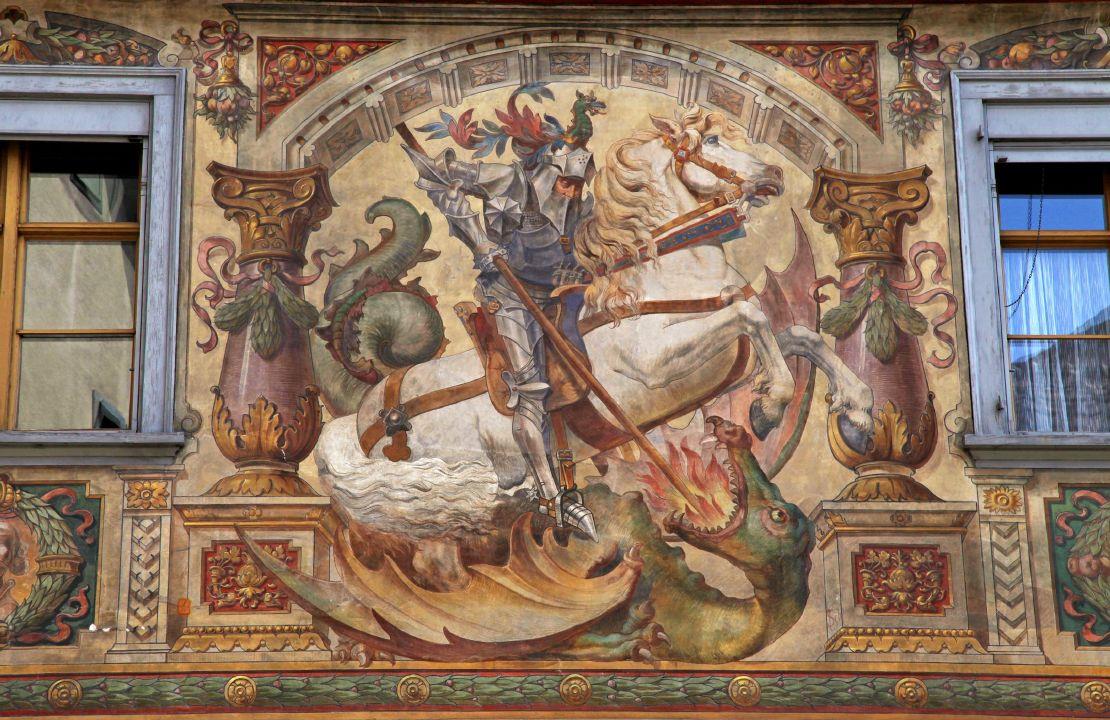St. George was born in Lydda, Palestine in 278 AD. He was an officer serving in the Guard of Diocletian and is best known for the slaying of a dragon. Many historians believe that his existence is more than just folklore. However, they dismiss his killing of a dragon as an entertaining fable citing the fact that in all recorded history archaeologists have never found the remains of these horrific creatures.
The legend is that in the city of Selene, modern day Cyrene in Libya, a huge ferocious fire-breathing dragon built a nest in a huge body of water. This spring furnished the local population with drinking water and so it was imperative to lure the dragon from his nest. To keep the dragon placated the locals offered sacrifices of two sheep a day until the supply of sheep was depleted.
Dragons are known to be fond of beautiful young maidens. With Selena’s sheep herd gone, innocent virgins drawn by lot were offered to the beast. One day the daughter of the king, Princess Puella drew the short straw. The king sadly presented his daughter to the dragon.
The young traveling Roman soldier named George arrived on the scene and inquired as to what was going on. He had been through numerous military campaigns and so he agreed to engage the dragon in battle. George on his magnificent white steed galloped at a quick pace to the shoreline of the spring and swooped down and lifted Princess Puella on to his horse placing her down safely out of the reach of the dragon. The dragon was furious.
 |
George’s aim was to anger the beast so that he would be in such a frenzied state so that its judgment and reflexes would be impaired. He began jabbing his foe with his lance every time he galloped past. Finally, he drew back about 30 yards and let his lance fly. The lance found its mark through an opening in its scaly neck and severed the jugular vein of the beast. The dragon stood stammering for over an hour until it finally dropped from exhaustion and loss of blood.
The beast was slain, Princess Puella was rescued, and legend has it that the population of Selena was converted to Christianity. St. George is the patron of knights, soldiers, scouts, fencers, and archers. As is the case of other saints wrapped in legend the story of St. George serves to remind the world of the ultimate victory of good over evil. King Edward III named him patron St. of England in 1350.
